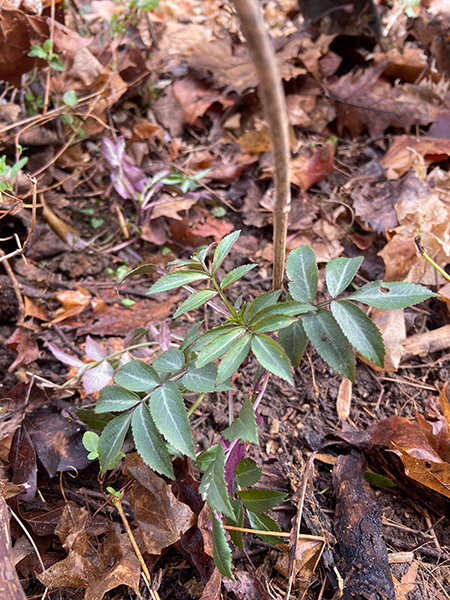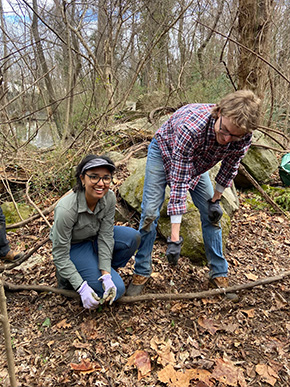
 Department of Conservation and Recreation
Department of Conservation and Recreation
Conserve. Protect. Enjoy.
 Department of Conservation and Recreation
Department of Conservation and Recreation
By Emi EndoPosted March 27, 2025
In 2018, Virginia Natural Heritage Program staff chose a small patch of Richmond’s James River Park System, where DCR happens to co-hold a conservation easement, to demonstrate that even small actions can help restore public land.
Several years ago, many invasive vines and shrubs choked out the understory plants, entangled the trees and even obscured large boulders. The seeds of these invasive species were spreading from the area into other places in the park, likely even altering the soil properties of the site itself.
How it started | After
Today, the invasive spread has been halted. Native seedlings are rebounding and slowly beginning to reclaim the space.





If you’re interested in adopting your own section of a public park — with the park’s blessing, of course — here are some points to keep in mind.
A landscape may appear green and lush, but that doesn’t mean the ecosystem is flourishing. Many park visitors may not realize that carpets of bright, green grass or the scent of certain blooming flowers may actually be signs of a habitat in decline and decay.
Evergreens in the winter landscape can be tell-tale signs; invasive English ivy, Japanese honeysuckle, winter creeper and Chinese privet are green while most native plants are dormant. Although American holly is a native evergreen found in James River Park, DCR volunteers encountered two invasive look-alikes during their habitat restoration.
The section of the park adopted by the agency staff was intentionally small. This allowed the group to concentrate their limited volunteering hours and document the changes. With each return visit, staff were encouraged to build on previous progress, prodded along by small results like finding a salamander, ripening pawpaw or a new (previously undocumented) native plant species popping up.
Every bit helps. It’s important to put in time consistently on your project. But it doesn’t have to be a lot of time. The Heritage Half Acre project has achieved significant results with just 2-hour work sessions about four times a year.
Take a triage approach: Clear the worst first.
You can enjoy the quick results of clearing the space around one tree and the satisfaction of ripping out a long vine of English ivy. (English ivy can only produce berries once the vines climb.)
Even when incomplete, each action can remove the potential for hundreds of new invasive plants spreading and seeding. The volunteers intentionally kept Chinese privet from fruiting.
Watch the progress and change with the seasons. In the meantime, building community while getting outdoors and a little exercise is a bonus benefit.


Native flora can thrive when invasive species are removed. You don’t even have to plant new native plants! Clearing invasives will give the previously buried native seed bank a chance.
Interested in getting involved? Check out friends groups of your local park. For the James River Park System, where DCR and Capital Region Land Conservancy are co-holders of an easement, the James River Park System Invasive Species Task Force offers volunteer opportunities. In other parts of the state, contact your local Virginia Master Naturalist Chapter for ongoing volunteer projects.
Rob Evans and Haley Rodgers contributed to this post.
Categories
Conservation | Native Plants | Natural Heritage

